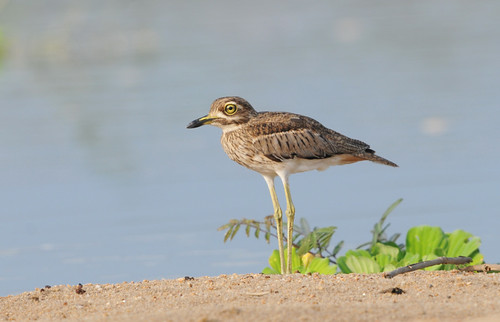tags: Water Dikkop, Water Thick-knee, Burhinus vermiculatus, birds, mystery bird, bird ID quiz
[Mystery bird] Water Dikkop, also known as the Water Thick-knee, Burhinus vermiculatus, photographed near the Kilombero River, Tanzania, Africa. [I will identify this bird for you in 48 hours]
Image: Dan Logen, 9 January 2010 [larger view].
Nikon D300, 600 mm VR lens. ISO 320, 1/800 sec, f/7.
Please name at least one field mark that supports your identification.


I think the background provides a good clue here. Only a worm would say more.
It's a Water Thick-knee (or Water Dikkop) Burhinus vermiculatus. There is a black ridge at the top of the bill extending from the face, the cutting edge is black at the base, the white line above the gray wing panel is not bordered by black below. The bill is fairly large and thick.
That is one Big Eyed bird!
Hmm, we do seem to covering the Burhinidae quite a fair bit!